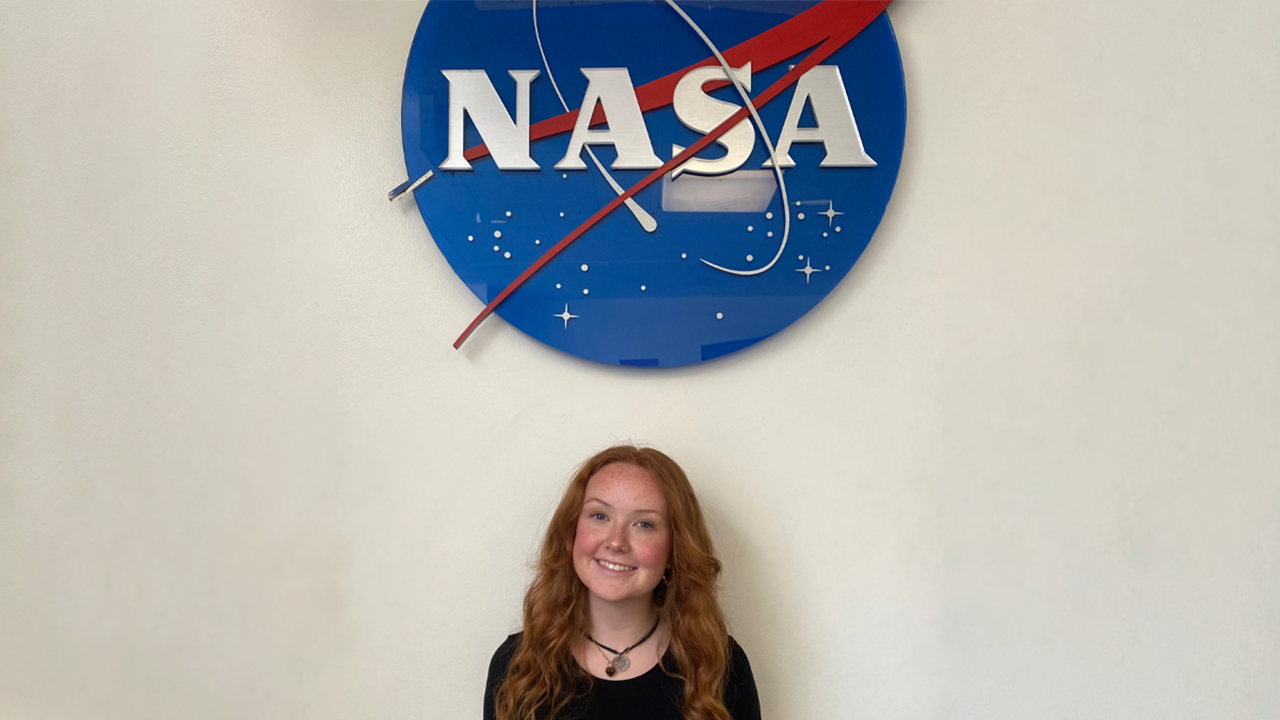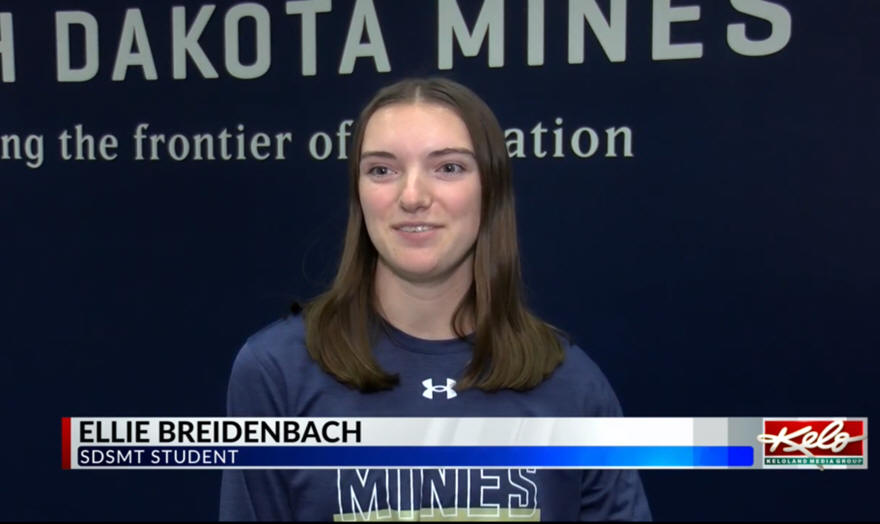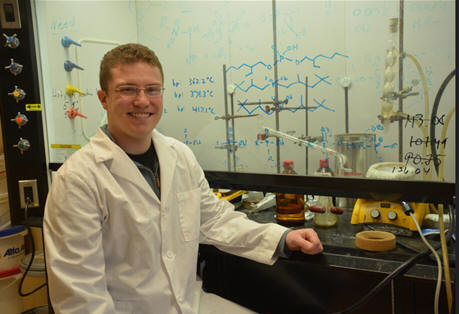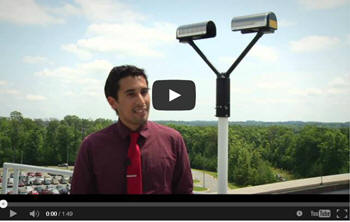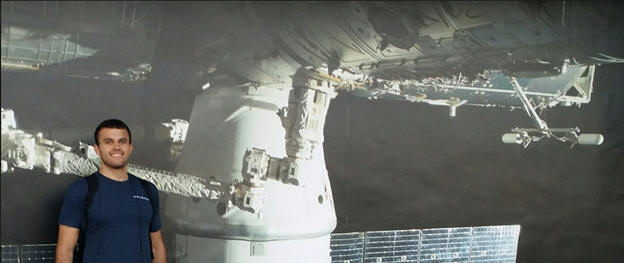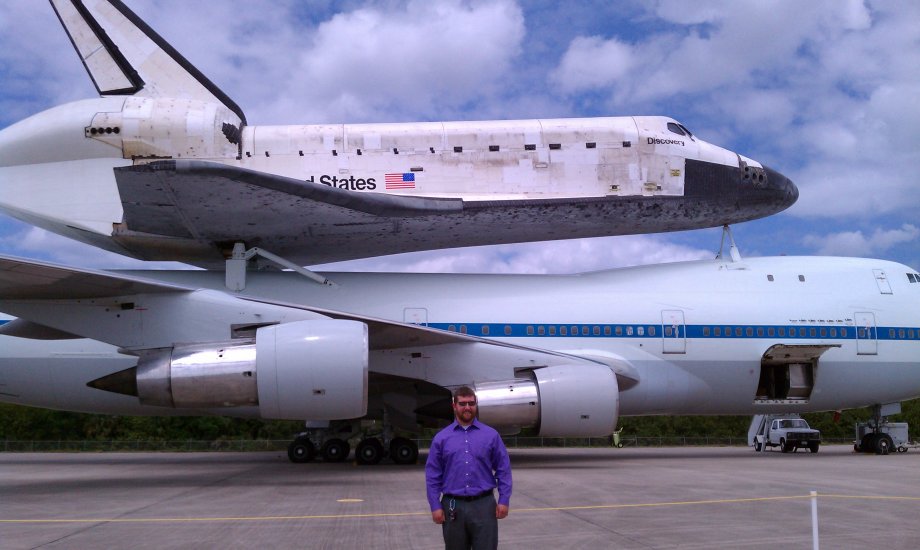Recent Student Success Stories
in which the SD Space Grant
Consortium is Particularly Proud
(Page last
updated October 28, 2025)
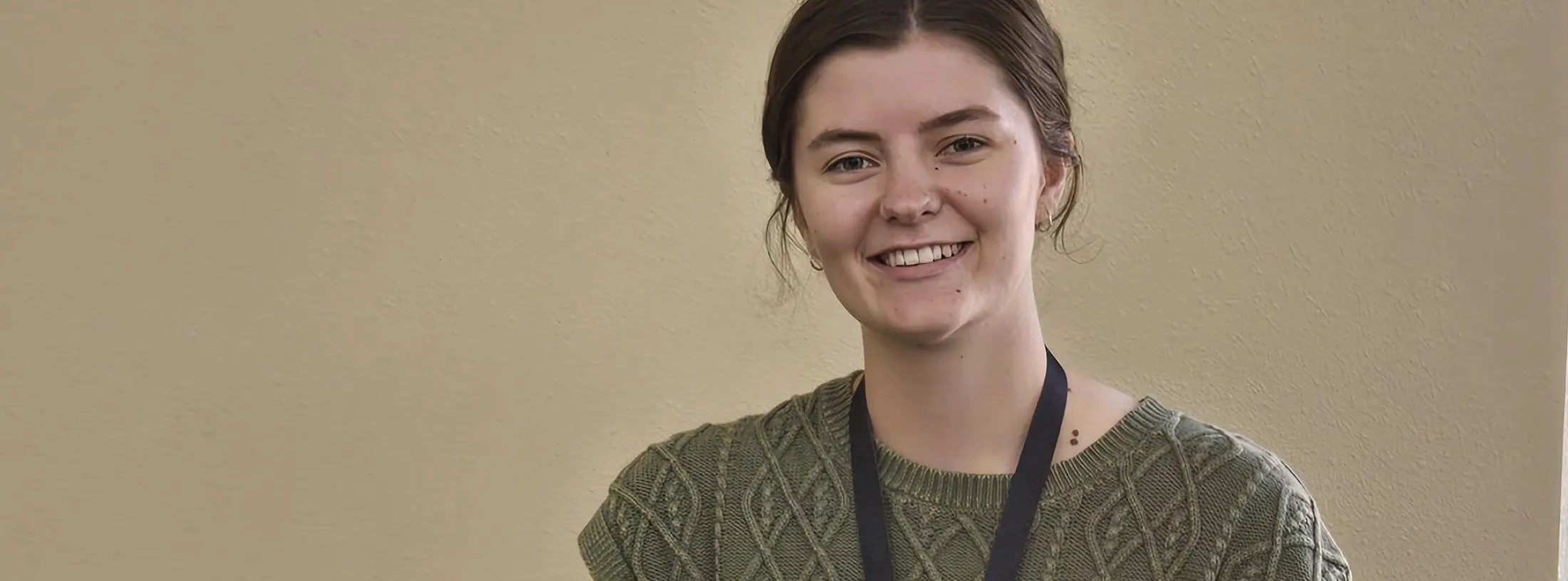
Early-career mathematics high school teacher Emily Siemonsma, graduate of SDSU and SD Space Grant-funded intern at Sanford Underground Research Facility, brings particle physics into Wyoming classroom***********************************************************
SDSM&T student Jenna Sayler interns at NASA Marshall Space Flight Center
***********************************************************
USD student Maddie Rozmajzl lands NASA Internship at Ames Research Center
***********************************************************
***********************************************************
SDSGC student awardee Ellie Breidenbach in the News for SURF research
***********************************************************
***********************************************************
- Ryan Brown, former SD Space Grant Fellow now Flight Controller at NASA Mission Control
- 12/20/14 Rapid City Journal article and ASEE PRISM articles
***********************************************************
Jesse Hinricher conducts NASA internship at Kennedy Space Center during Spring 2014 semester***********************************************************
Space Grant Fellow Jorel Torres interns at Goddard
***********************************************************
John Ziadat, a senior Mechanical Engineering student at SDSM&T and Space Grant Fellow who graduates in December 2014, recently accepted a full-time offer from Space Exploration Technologies (SpaceX) where he interned during summer 2014. John will join the Hawthorne, CA-based aerospace company as a Mechanical Design/Automation Engineer. As an intern at SpaceX, John’s major focus was the development of an automated Phased-Array Ultrasonic inspection system for the Falcon 9 and Falcon Heavy rockets. The design was conceptualized and implemented by John and another intern in his department at SpaceX. Once up and running, the system will reduce the man-hours spent by the company on Phased-Array Ultrasonic inspection by ~60%. It will also drastically improve the quality of Phased-Array Ultrasonic inspection for all rockets that leave the factory. As an undergraduate, John was awarded several SDSGC stipends; the bulk of which were in support of his involvement with the SDSM&T Moonrockers Lunabotics (aka NASA Robotics Mining Competition) team. This robotics team sets out annually to design a fully-autonomous mining vehicle for application on the Moon or Mars. John has been an active member of the team since he was a freshman at SDSM&T and plans to continue to do so throughout the 2014-15 campaign. John stated that the SDSGC has been indispensable in his experience with the Moonrockers team and he is very appreciative of the financial support from Space Grant. He said: “Any success that this team has enjoyed over the past five years has been made possible only through the generous and consistent support of the SDSGC. Thanks to them, this team has been able to produce some outstanding engineers who will go on to do great things.”
***********************************************************
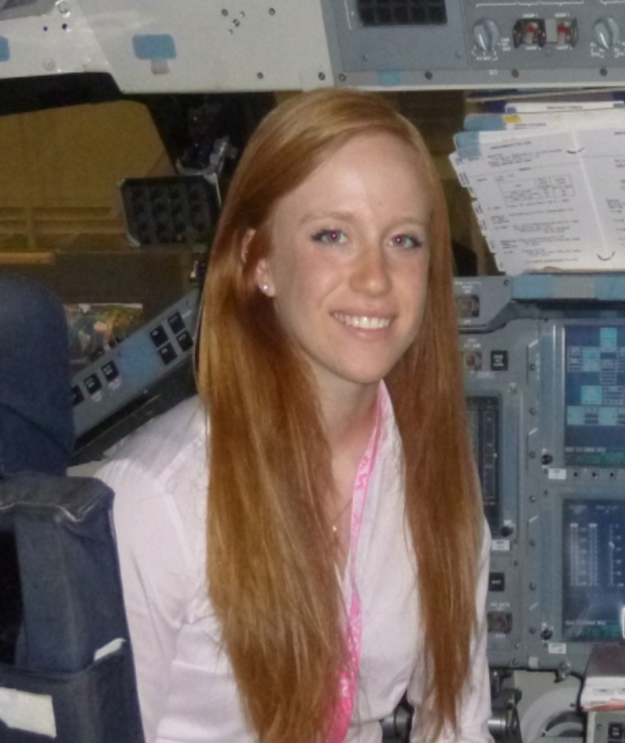 Shea Thorson, a recent SDSM&T
graduate with an Interdisciplinary Sciences (Pre-Professional Health Sciences)
degree, conducted a summer 2013 internship at NASA JSC. Shea is a Space Grant
fellow, but her JSC summer internship was fully funded by NASA USRP. Her
project was titled Development of a Field-Compatible Dynamic Visual Acuity
Test and was conducted in JSC’s Neuroscience Laboratory under the mentorship
of Dr. Millard Reschke, Chief
Shea Thorson, a recent SDSM&T
graduate with an Interdisciplinary Sciences (Pre-Professional Health Sciences)
degree, conducted a summer 2013 internship at NASA JSC. Shea is a Space Grant
fellow, but her JSC summer internship was fully funded by NASA USRP. Her
project was titled Development of a Field-Compatible Dynamic Visual Acuity
Test and was conducted in JSC’s Neuroscience Laboratory under the mentorship
of Dr. Millard Reschke, Chief
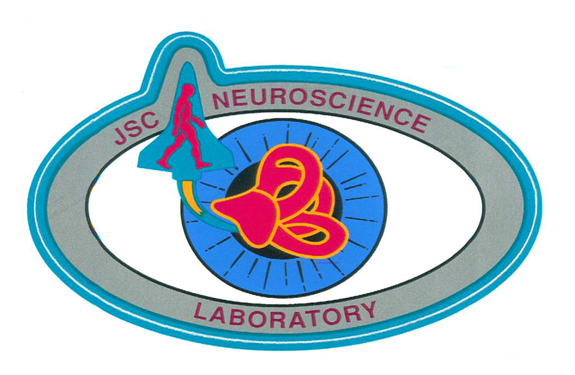 of Neuroscience at NASA. The prior summer, due to Shea’s experience and interest in health science, she accompanied handicapped
student Dustin Swanson as his aid when he conducted an internship at JSC. Shea
became fascinated with NASA as a result of that experience and went on to secure
her own internship the following summer. The Neuroscience Lab performs various
tests on the human vestibular system, which is an essential component to an
astronaut in terms of performance and safety, providing a sense of balance,
coordination, and movement. The vestibulo-ocular reflex (VOR) is responsible for
maintaining a stable gaze by evoking eye movements in response to changes in
head position. The dynamic visual acuity (DVA) test, which is currently being
collected as part of the NASA Functional Task Test (FTT) experiment, is a
suitable means to functionally measure the VOR of astronauts before and after
adaptive changes occur due to microgravity exposure. Shea’s specific task was to
turn an existing DVA test into a field-compatible test so that scientists from
JSC’s Neuroscience Lab, and their counterparts in Russia, can collect data from
astronauts in Kazakhstan within one hour of landing, rather than having to wait
24 hours to conduct the test upon arrival in Houston. It is necessary to collect
immediate post-flight data in order to create a timeline of recovery for
astronauts who will eventually spend over six months traveling to Mars. Dr. Reschke, Shea’s NASA mentor, was so impressed with her abilities as an intern
that he secured a job for her in his Neuroscience Lab with a NASA contractor
upon her graduation in May 2014. Commenting about her internship experience,
Shea wrote: “I had the honor of interning at NASA’s
Johnson Space Center in Houston for 10 weeks in the summer of 2013. I met some
of the most intelligent people I have ever encountered and made many wonderful
memories. It was by far the best summer of my life."
of Neuroscience at NASA. The prior summer, due to Shea’s experience and interest in health science, she accompanied handicapped
student Dustin Swanson as his aid when he conducted an internship at JSC. Shea
became fascinated with NASA as a result of that experience and went on to secure
her own internship the following summer. The Neuroscience Lab performs various
tests on the human vestibular system, which is an essential component to an
astronaut in terms of performance and safety, providing a sense of balance,
coordination, and movement. The vestibulo-ocular reflex (VOR) is responsible for
maintaining a stable gaze by evoking eye movements in response to changes in
head position. The dynamic visual acuity (DVA) test, which is currently being
collected as part of the NASA Functional Task Test (FTT) experiment, is a
suitable means to functionally measure the VOR of astronauts before and after
adaptive changes occur due to microgravity exposure. Shea’s specific task was to
turn an existing DVA test into a field-compatible test so that scientists from
JSC’s Neuroscience Lab, and their counterparts in Russia, can collect data from
astronauts in Kazakhstan within one hour of landing, rather than having to wait
24 hours to conduct the test upon arrival in Houston. It is necessary to collect
immediate post-flight data in order to create a timeline of recovery for
astronauts who will eventually spend over six months traveling to Mars. Dr. Reschke, Shea’s NASA mentor, was so impressed with her abilities as an intern
that he secured a job for her in his Neuroscience Lab with a NASA contractor
upon her graduation in May 2014. Commenting about her internship experience,
Shea wrote: “I had the honor of interning at NASA’s
Johnson Space Center in Houston for 10 weeks in the summer of 2013. I met some
of the most intelligent people I have ever encountered and made many wonderful
memories. It was by far the best summer of my life."
***********************************************************
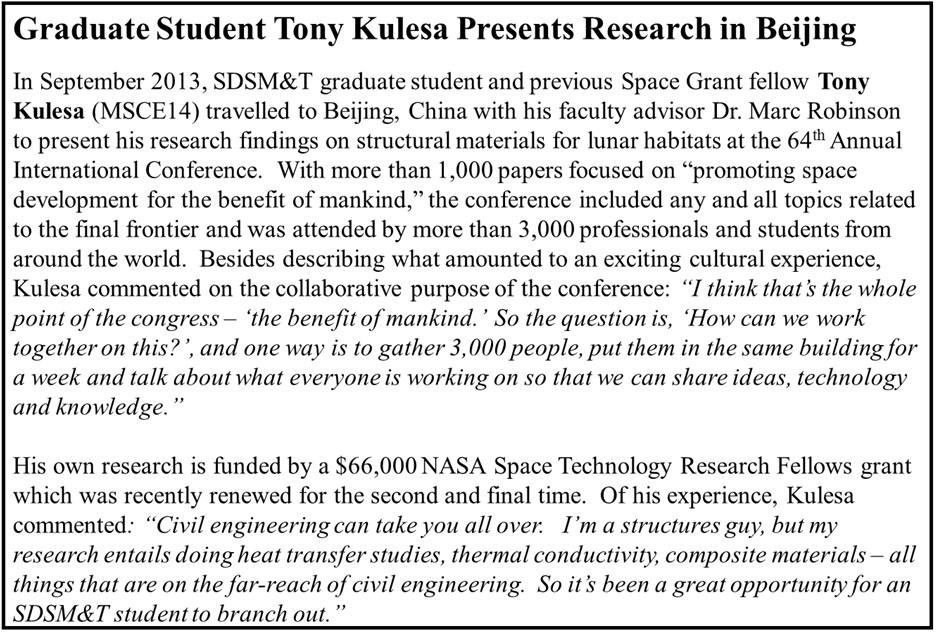
SD Space Grant fellow Tony Kulesa presents research at Sept. 2013 International Astronautical Congress in Beijing, China.
***********************************************************
From South Dakota to NASA’s Kennedy Space Center:
Michael (Mick) Barth, a former South Dakota Space Grant student fellow, completed a NASA co-op during
his undergraduate work. After graduation, he went on to become lead design engineer and project manager
in the Construction of Facilities division at Kennedy Space Center.

